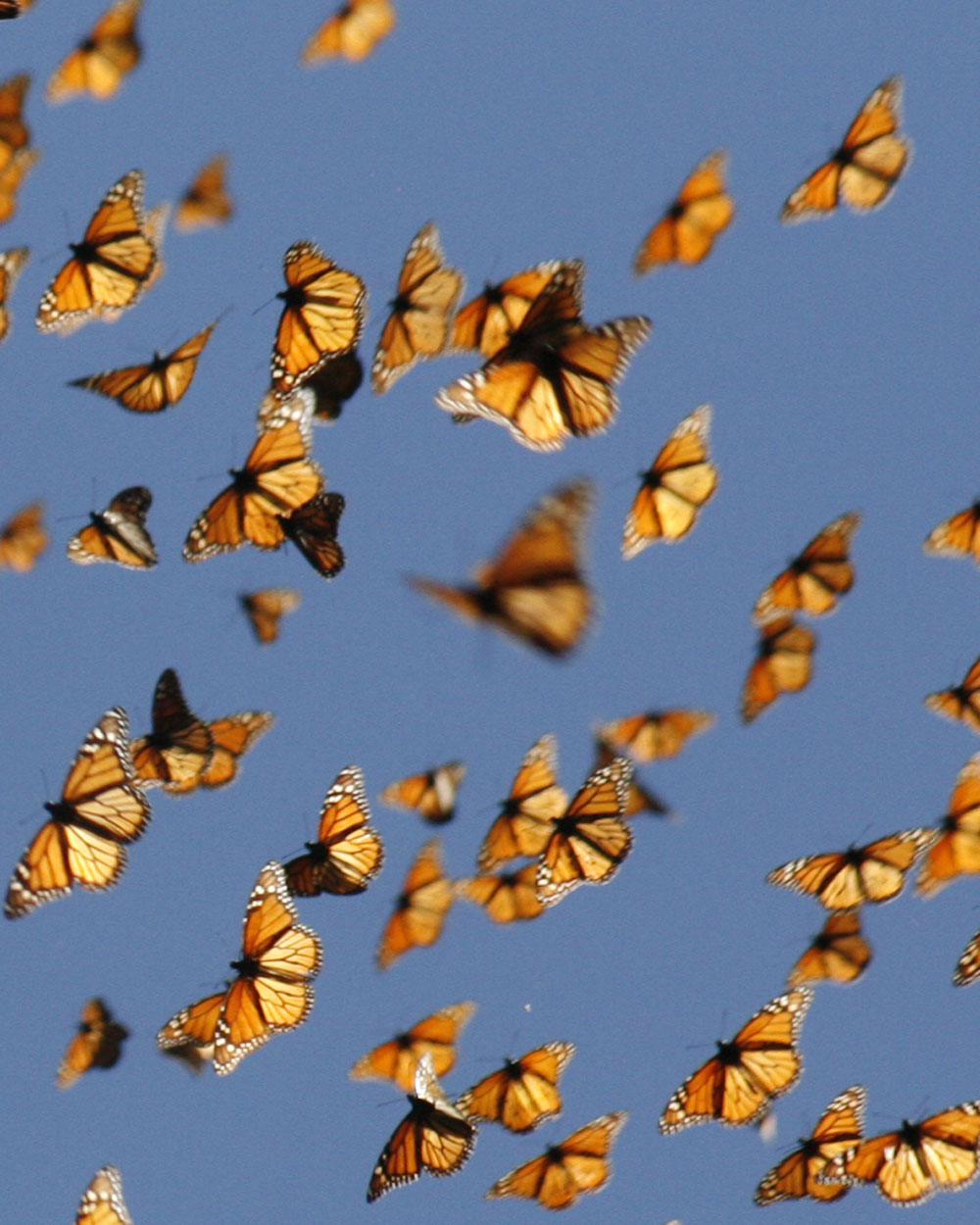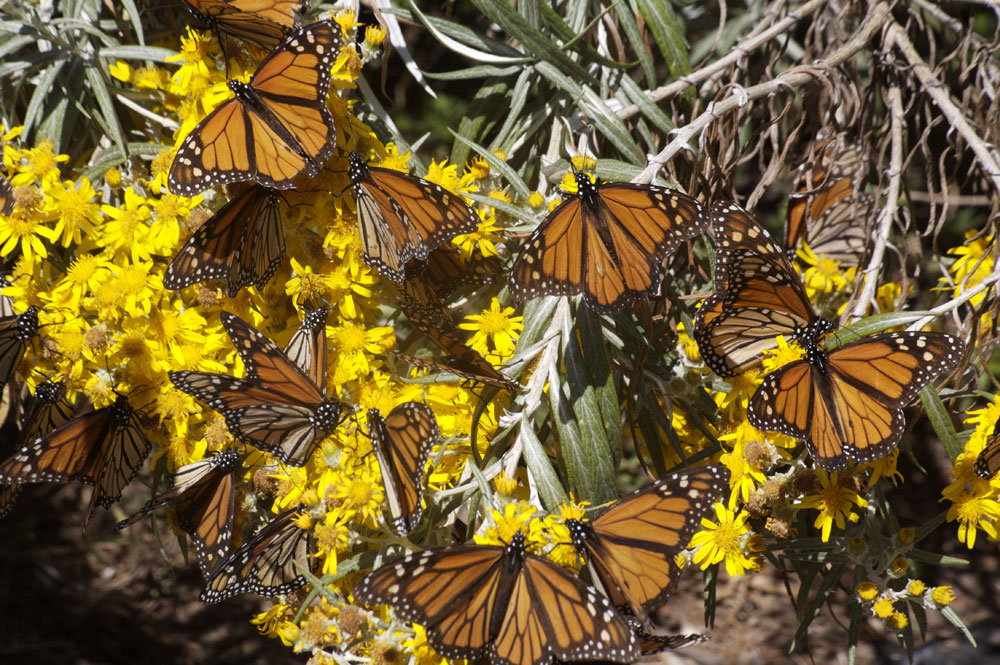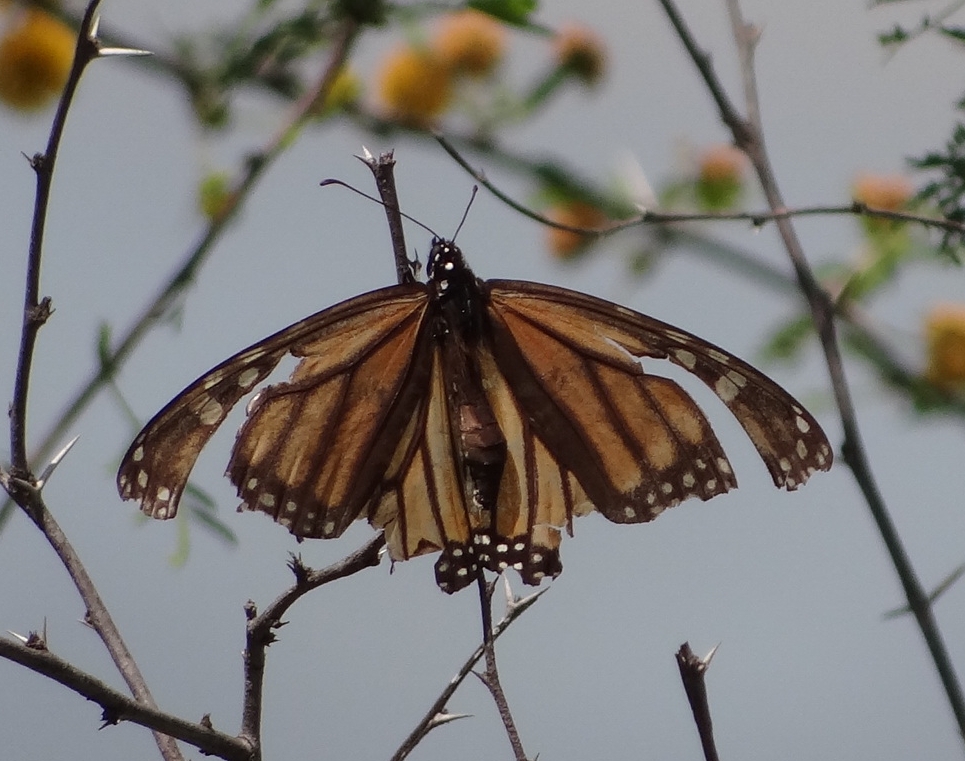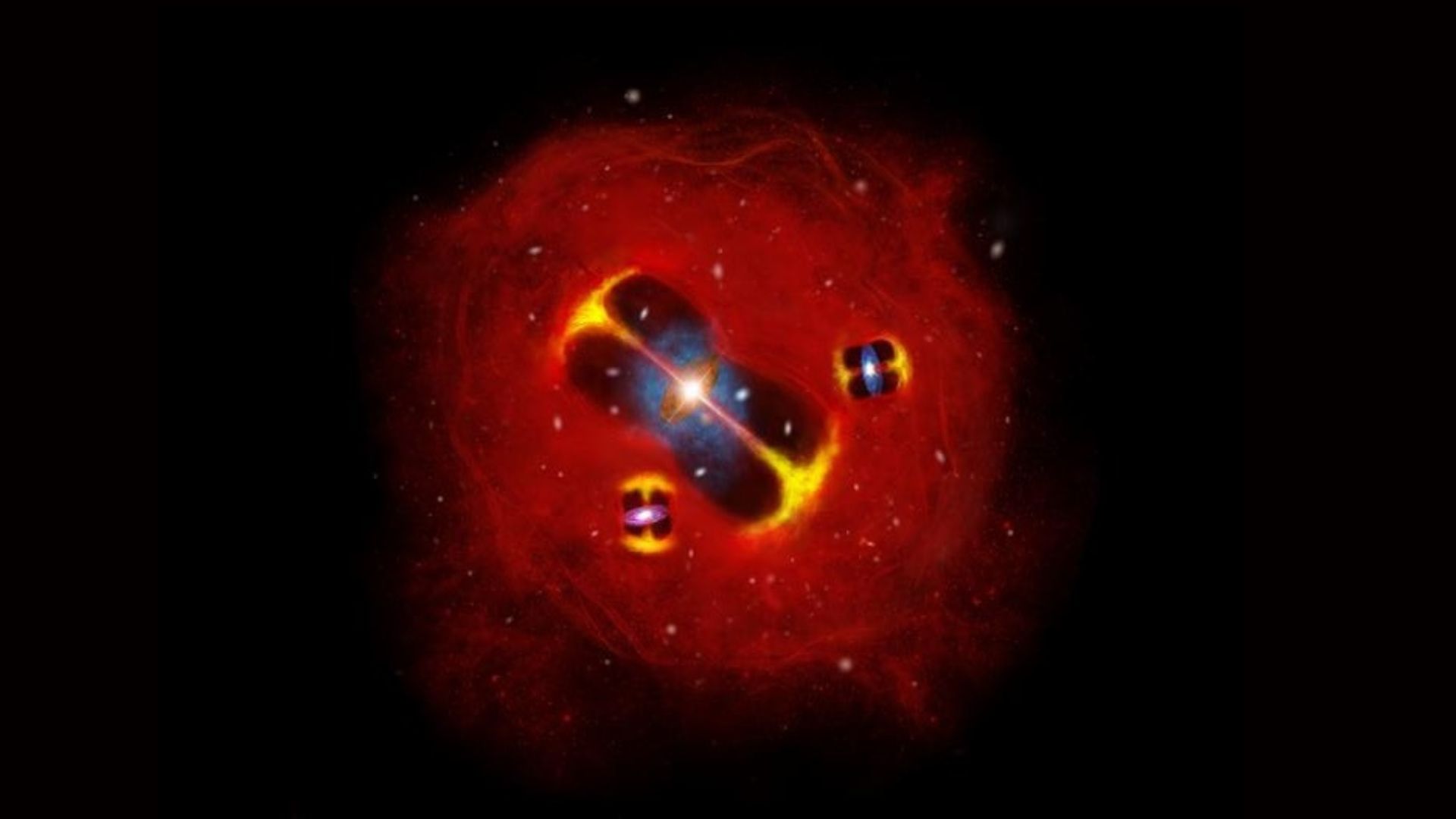Cold Snaps Trigger Monarch Butterfly Migrations

Editor's note: This story was updated to correct a direction the monarchs fly and when the were and were not exposed to cold in a controlled environment.
Cold weather in the Mexico mountaintops, where monarchs spend the winter, triggers the butterflies' migration northward, according to new research.
The finding raises troubling implications, researchers said, for how the approximately half-billion migratory butterflies will find their way if climate change unduly warms the mountains.
"What we're most struck by is that this is an area of vulnerability for the butterflies," said Steven Reppert, a butterfly migration specialist with the University of Massachusetts Medical School. Reppert co-authored a paper on the research, which will appear in the March 4 edition of the journal Current Biology.
Simulating migration
Two large populations of monarchs live in the United States — one on the west coast, and the other in eastern North America.
Reppert and lead author Patrick Guerra zeroed in on the eastern butterflies to see how they make the 2,000-mile (3,200-kilometer) journey south to a small overwintering site in central Mexico. The researchers determined that the butterflies navigate by the sun, compensating for the time of day as they go. [Images: Monarchs' Butterfly Forest in Central Mexico]
Get the world’s most fascinating discoveries delivered straight to your inbox.
To track the monarchs' flight, Guerra and Reppert put most of the butterflies in a flight simulator. The team placed the enclosure, a plastic barrel, outdoors and suspended the butterfly inside on a short wire above a fan. The butterfly's flight is recorded on video and with a directional recording device.
The scientists ran one experiment during the fall, when migrants usually head south. For 24 days, the researchers kept the butterflies in a controlled environment that mimicked cold temperatures experienced in the Mexico mountains in the spring. Then, the researchers put the butterflies inside the simulator to see what they would do.
"Instead of going south, they went north. We said, 'Wow,'" Reppert told OurAmazingPlanet.
North and south
After performing experiments to discount the effects of light and other factors, the researchers captured older migrant monarch butterflies in the southern United States as a last control. The scientists kept the monarchs in a controlled environment for four months.
During the early spring, these butterflies are usually in the midst of a northward migration, having experienced cold temperatures in Mexico. That's not what these migrants did, however, after not being exposed to the cold in the controlled environment. The butterflies flew south in the simulator instead of north.
This means that cold is the major impetus for monarchs to reverse their direction and fly north, Reppert said.
"We think it’s a pretty compelling story in terms of the importance of this cold temperature for this change in migratory patterns," Reppert said.
Follow Elizabeth Howell @howellspace, or OurAmazingPlanet on Twitter @OAPlanet. We're also on Facebookand Google+.

Elizabeth Howell was staff reporter at Space.com between 2022 and 2024 and a regular contributor to Live Science and Space.com between 2012 and 2022. Elizabeth's reporting includes multiple exclusives with the White House, speaking several times with the International Space Station, witnessing five human spaceflight launches on two continents, flying parabolic, working inside a spacesuit, and participating in a simulated Mars mission. Her latest book, "Why Am I Taller?" (ECW Press, 2022) is co-written with astronaut Dave Williams.




